A Quetzal Christmas
Christmas Red and Green
The colors red and green represent Christmas probably from traditions of using sprigs of evergreen trees and red berries to decorate – holly comes to mind.
But wouldn’t it be great if we could decorate our trees with quetzals – all six species of which are red and green?
The Crested Quetzal is an Andean species, occurring in cloud forests from Venezuela to Bolivia. This is one of the more commonly seen species, but photos this good are hard to get. This one was digiscoped by Anthony Collerton in Bolivia.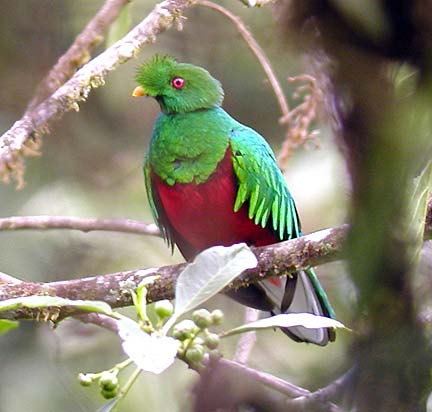
The Golden-headed Quetzal has a very similar range to the previous and is also not uncommon but tends to occur at higher elevations. On some good birding roads that transect the entire Andean slope, such as the Manu Road of Peru or the Chapare Road of Bolivia, you can see both species in a single day. I digscoped this one on the Manu Road.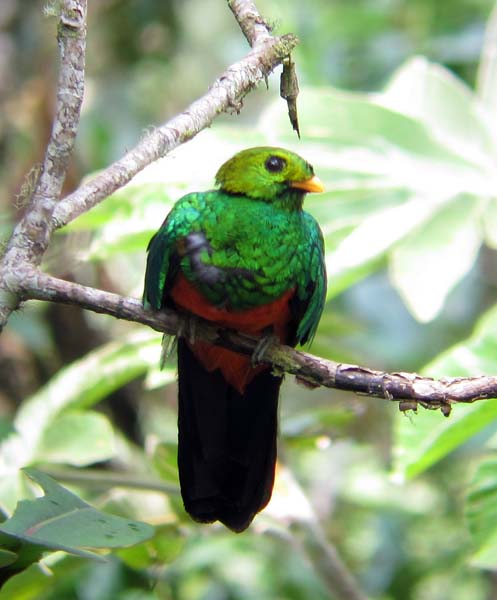
The White-tipped Quetzal is also a cloud forest species, but is restricted to northern Colombia (Santa Marta Mountains) and northern Venezuela. It’s the only one I haven’t seen. This one was photographed in northern Venezuela by Jerry Oldenettel.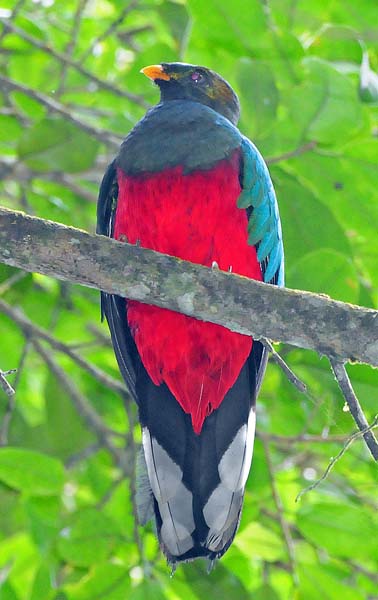
For some reason, the Pavonine Quetzal seems to be the least common of the group. It’s essentially found in high quality lowland rainforest, but even where present can be a tough bird to find. I’ve seen it on my Manu tour, at Cristalino Jungle Lodge, and at Rancho Grande in Rondôndia, Brazil. It’s always an exciting find. I digiscoped this one on the Castanheira Trail at Cristalino Jungle Lodge.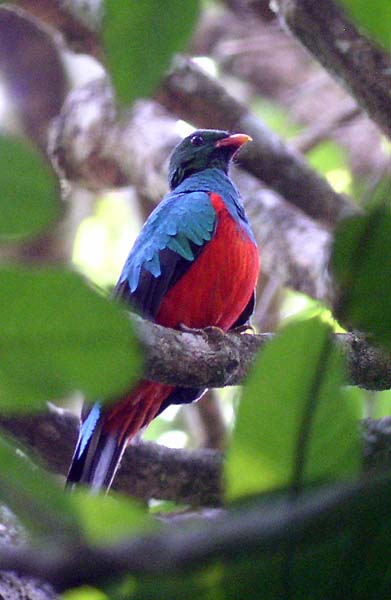
The magnificent Resplendent Quetzal is perhaps the best known. Most people are thinking about this Central American species (in cloud forests from eastern Oaxaca, Mexico to Panama) when they hear the word “quetzal.” The ridiculously long upper tail coverts of the male and the exaggerated crest are the main standouts, but it shares the long, dropping scapulars and briliat red and green of the other species. I digiscoped this one in the best place to find them: the Savegre River Valley of southern Costa Rica. I visit this place on all my Costa Rica tours, and we’ve never missed it.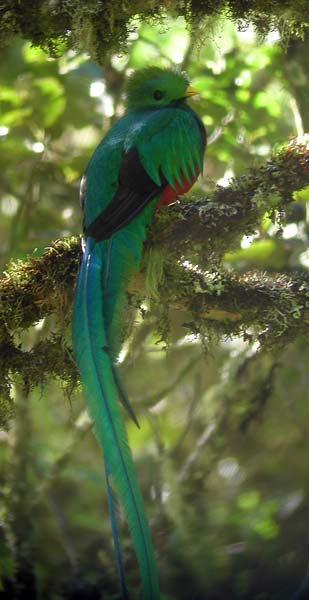
The final species is Eared Quetzal, which until recently was called Eared Trogon. It’s not in the same genus as the other quetzals, but genetically it appears to be more closely related to them than to the trogons. Found in conifer-oak-aspen forests of Mexico’s Sierra Madre Occidental, it has occurred several times in Arizona, even breeding once. I digiscoped this one near the town of Madera in west-central Chihuahua, one of the best places to see this elusive species.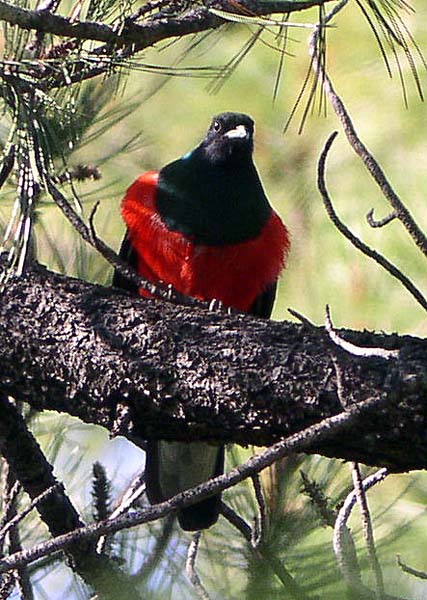
Birds aren’t the only tropical creatures to sport Christmas colors. How could I resist adding this Red-eyed Treefrog from Costa Rica for a little diversity? A facsimile would make for a great tree ornament.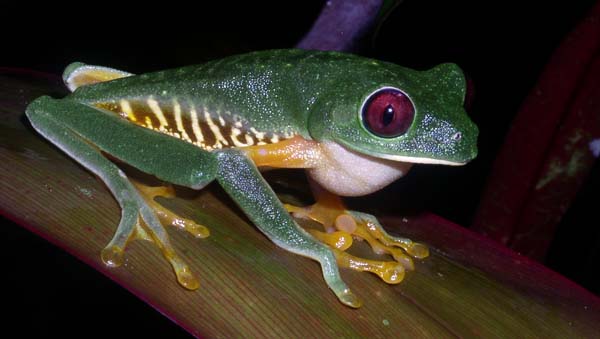

Rich, this post is ridiculous. Awesome. I really wondered why more gorgeous birds didn’t get superlatives like “resplendent”, but then again, what other bird family could possibly deserve it quite as much?
Hi Rich, great post. I’ve also seen Golden-headed on Manu Road. What a place!
I’ll take a few for my tree thanks! Nice post.
Cool post! I really like these Rich. Please keep them coming.
Golden-headed Quetzal was one my first Ecuadorian birds I got really excited about.
Never was able to find a Crested though for some reason. I’ll to have to go back for that one =)
Scott
You are not alone. I have had several clients in that position. Although we
mostly get it in the end, it has happened that we fail. Crested seems to be
tricky in both Ecuador and Peru in my experience. Far less common than
Golden-headed – and we do end up with several trips without decent sightings
of Crested.
Gunnar
Gunnar Engblom-Lima, Peru.
Gunnar’s Blog – updated frequently.
https://www.kolibriexpeditions.com/birdingperu/blog/
Follow me on https://www.twitter.com/kolibrix
https://www.facebook.com/Gunnar.Engblom/
On 1 January 2011 11:46:30 UTC-5, Disqus <